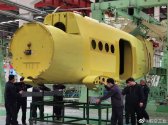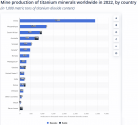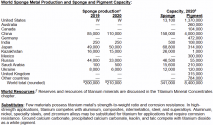The aviation industry held the opening of the Civil Aircraft Airborne System Engineering Center
On the morning of March 17, the aviation industry held the unveiling of the
(hereinafter referred to as the Engineering Center) in Shanghai.
Tian Yulong, member of the Party Group and chief engineer of the Ministry of Industry and Information Technology,
Zhang Yanzhong, director of the National Special Expert Advisory Committee of the National Aircraft Special Advisory Committee and academician of the Chinese Academy of Engineering, Hao
Zhaoping, deputy secretary and general manager of the Aviation Industry Party Group, attended the event and delivered speeches, and also delivered speeches with Liu Duo, deputy mayor of Shanghai, Jing Xuhua, director of the National Defense Department of the Ministry of Finance, and
Xie, director of the Capital Bureau of the State-owned Assets Supervision and Administration Commission.
Zhou Yong,
Zhu Yiji, Director of the Fourth Department of the System of the Bureau of Science, Technology and Industry for National Defense,
Xu Feng, Deputy Director of the Airworthiness Department of the Civil Aviation Administration,
Wu Yue, Director of the
Science and Technology Committee, and
Wang Jiangang, Secretary of the
Party Committee and Chairman of the
jointly completed the opening of the project center. The event was presided over by
He Shengqiang, a member of the aviation industry party group and deputy general manager.
Hao Zhaoping pointed out that the establishment of the engineering center is a strategic measure for the aviation industry to thoroughly implement the national aircraft strategy guided by the spirit of the 20th National Congress of the Communist Party of China. He stressed: First, we should take the initiative to undertake the strategic layout of national regional development, based on the location advantages of the Yangtze River Delta and the development foundation of the large aircraft industry, deepen the professional integration of civil aircraft airborne fields, and gather forces to carry out engineering research and technological innovation; second, we should accelerate the construction of engineering centers and accelerate the construction of an open and collaborative civil aircraft innovation system. Plan to promote the high-quality development of the civil aircraft carrier industry; Third, we should take the establishment of the engineering center as a new starting point, accelerate the integration into the construction of the "five centers" in Shanghai, and build a new pattern for the development of civil aircraft aircraft systems.
Zhang Yanzhong said that the establishment of an engineering center by the Aviation Industry Group in Shanghai is a major organizational and institutional change in the airborne field. It fully shows that the Aviation Industry Group connects with the national major strategic regional layout, gives full play to its respective advantages with Shanghai, and works together to help the flying in accordance with the principles of collaborative innovation, layout optimization and resource sharing. With the confidence and determination for the high-quality development of the aircraft industry and airborne system industry, I hope that the engineering center must adhere to scientific and technological self-reliance and self-improvement, assume the main responsibility for the development of the national civil aircraft airborne system industry and products, and as a leading enterprise, strive to establish and improve the airborne industrial chain supply chain, and promote the vigorous development of the national large aircraft industry.
Tian Yulong pointed out that the official establishment of the engineering center is a major progress made by the Aviation Industry Group and Shanghai in implementing the spirit of the 20th National Congress of the Communist Party of China, implementing the strategic deployment of the Party Central Committee and the State Council, and promoting the development of large aircraft. It is also a deepening the reform of the aviation industry system, strengthening the national strategic scientific and technological force, and optimizing the allocation of innovative funds. Important measures of the source. It is hoped that in the follow-up work, the engineering center will keep in mind its mission, have the courage to take responsibility, persevere and continue to tackle key problems, vigorously cooperate and innovate in clusters, and build an airborne system industrial cluster in Shanghai and the Yangtze River Delta as soon as possible.
As a secondary unit of the aviation industry, the will comprehensively serve the national strategy, build scientific and technological innovation capabilities of civil aircraft airborne systems, promote the construction of a safe and efficient civil aircraft aircraft industry chain supply chain, and become a civil aircraft aircraft aircraft system integrator with international competitiveness and sustainable development capabilities.
More than 40 units and more than 200 people participated in the unveiling activities, including the production promotion center of the Ministry of Industry and Information Technology, the Airworthiness and approval center of the Civil Aviation Administration Bureau, the Shanghai Economic and Information Commission, the State-owned Assets Supervision and Administration Commission, Minhang District, Wujing Town, Shanghai Zhongguang Nuclear Technology Company and the aviation industry-related general assistant executives, headquarters departments, directly affiliated units and member units.




